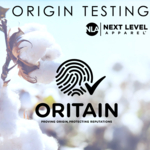DUBLIN--(BUSINESS WIRE)--Horizon Therapeutics plc (Nasdaq: HZNP) today announced that its strategic partner Mitsubishi Tanabe Pharma Corporation (MTPC) has received manufacturing and marketing approval of UPLIZNA for the prevention of relapses of neuromyelitis optica spectrum disorder (including neuromyelitis optica) from the Japanese Ministry of Health, Labour and Welfare.
MTPC has rights to the development and commercialization of UPLIZNA for NMOSD as well as other potential future indications in Japan, Thailand, South Korea, Indonesia, Vietnam, Malaysia, Philippines, Singapore and Taiwan. Horizon is eligible to receive milestone payments based on certain milestones, plus payments based, in part, on sales revenue.
´┐ŻThe UPLIZNA approval in Japan is a significant milestone for NMOSD patients as it provides another treatment option for this devastating disease,´┐Ż said Tim Walbert, chairman, president and chief executive officer, Horizon. ´┐ŻWe continue to aggressively execute on a global expansion strategy with our other on-market and investigational medicines with the goal of bringing important treatments to those impacted by rare, autoimmune and severe inflammatory diseases.´┐Ż
About Neuromyelitis Optica Spectrum Disorder (NMOSD)
NMOSD is a rare, severe, autoimmune disease that attacks the optic nerve, spinal cord and brain stem, which leads to loss of vision and paralysis. In Japan, it has a low prevalence rate of 2 to 4 cases per 100,000 population1. The disease is primarily associated with anti-aquaporin 4 (AQP4) antibodies, which are detected in approximately 73%-90% of patients with NMOSD2.
About UPLIZNA Approved in the United States
INDICATION
UPLIZNA is indicated for the treatment of neuromyelitis optica spectrum disorder (NMOSD) in adult patients who are anti-aquaporin-4 (AQP4) antibody positive.
IMPORTANT SAFETY INFORMATION
UPLIZNA is contraindicated in patients with:
- A history of life-threatening infusion reaction to UPLIZNA
- Active hepatitis B infection
- Active or untreated latent tuberculosis
WARNINGS AND PRECAUTIONS
Infusion Reactions: UPLIZNA can cause infusion reactions, which can include headache, nausea, somnolence, dyspnea, fever, myalgia, rash or other symptoms. Infusion reactions were most common with the first infusion but were also observed during subsequent infusions. Administer pre-medication with a corticosteroid, an antihistamine and an anti-pyretic.
Infections: The most common infections reported by UPLIZNA-treated patients in the randomized and open-label periods included urinary tract infection (20%), nasopharyngitis (13%), upper respiratory tract infection (8%) and influenza (7%). Delay UPLIZNA administration in patients with an active infection until the infection is resolved.
Increased immunosuppressive effects are possible if combining UPLIZNA with another immunosuppressive therapy.
The risk of hepatitis B virus (HBV) reactivation has been observed with other B-cell-depleting antibodies. Perform HBV screening in all patients before initiation of treatment with UPLIZNA. Do not administer to patients with active hepatitis.
Although no confirmed cases of Progressive Multifocal Leukoencephalopathy (PML) were identified in UPLIZNA clinical trials, JC virus infection resulting in PML has been observed in patients treated with other B-cell-depleting antibodies and other therapies that affect immune competence. At the first sign or symptom suggestive of PML, withhold UPLIZNA and perform an appropriate diagnostic evaluation.
Patients should be evaluated for tuberculosis risk factors and tested for latent infection prior to initiating UPLIZNA.
Vaccination with live-attenuated or live vaccines is not recommended during treatment and after discontinuation, until B-cell repletion. Reduction in Immunoglobulins: There may be a progressive and prolonged hypogammaglobulinemia or decline in the levels of total and individual immunoglobulins such as immunoglobulins G and M (IgG and IgM) with continued UPLIZNA treatment. Monitor the level of immunoglobulins at the beginning, during, and after discontinuation of treatment with UPLIZNA until B-cell repletion especially in patients with opportunistic or recurrent infections.
Fetal Risk: May cause fetal harm based on animal data. Advise females of reproductive potential of the potential risk to a fetus and to use an effective method of contraception during treatment and for 6 months after stopping UPLIZNA.
Adverse Reactions: The most common adverse reactions (at least 10% of patients treated with UPLIZNA and greater than placebo) were urinary tract infection and arthralgia.
For additional information on UPLIZNA, please see Prescribing Information at www.UPLIZNA.com.
About Horizon
Horizon is focused on the discovery, development and commercialization of medicines that address critical needs for people impacted by rare, autoimmune and severe inflammatory diseases. Our pipeline is purposeful: we apply scientific expertise and courage to bring clinically meaningful therapies to patients. We believe science and compassion must work together to transform lives. For more information on how we go to incredible lengths to impact lives, please visit www.horizontherapeutics.com and follow us on Twitter, LinkedIn, Instagram and Facebook.
About Mitsubishi Tanabe Pharma
Mitsubishi Tanabe Pharma, which was founded in 1678, has its headquarters in Doshomachi, Osaka, which is the birthplace of Japan´┐Żs pharmaceutical industry. With business centered on ethical pharmaceuticals, Mitsubishi Tanabe Pharma is a well-established company with one of the longest histories of pharmaceutical companies in Japan.3 Through the discovery of drugs that address unmet medical needs, centered on its priority disease areas ´┐Ż immune-inflammation diseases, central nervous system, and vaccines ´┐Ż Mitsubishi Tanabe Pharma will strive to contribute to the health of patients around the world. For more information, go to https://www.mt-pharma.co.jp/e/.
References
1 Japanese Society of Neurology, 2017 guidelines for the diagnosis and treatment of multiple sclerosis / neuromyelitis optica
2 Chang VTW, Chang HM. Review: Recent advances in the understanding of the pathophysiology of neuromyelitis optica spectrum disorder. NAN. 2020; 46:199-218.
3 Research by TOKYO SHOKO RESEARCH, LTD
Contacts
Tina Ventura
Senior Vice President, Investor Relations
[email protected]
Ruth Venning
Executive Director, Investor Relations
[email protected]
U.S. Media Contacts:
Geoff Curtis
Executive Vice President, Corporate Affairs & Chief Communications Officer
[email protected]
Ireland Media Contact:
Gordon MRM
Ray Gordon
[email protected]










